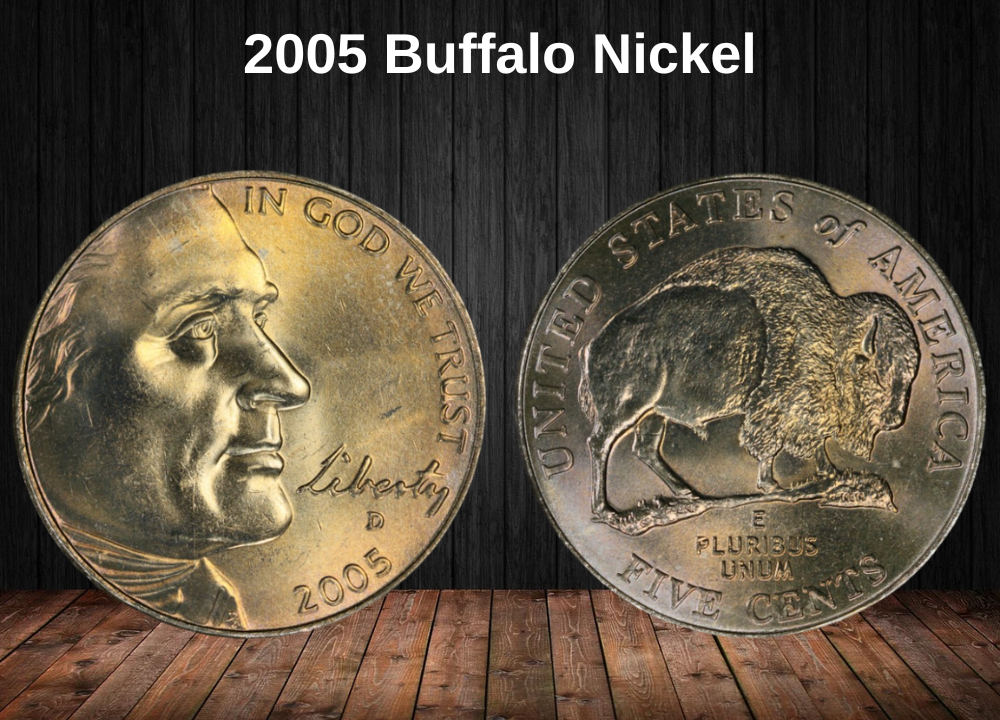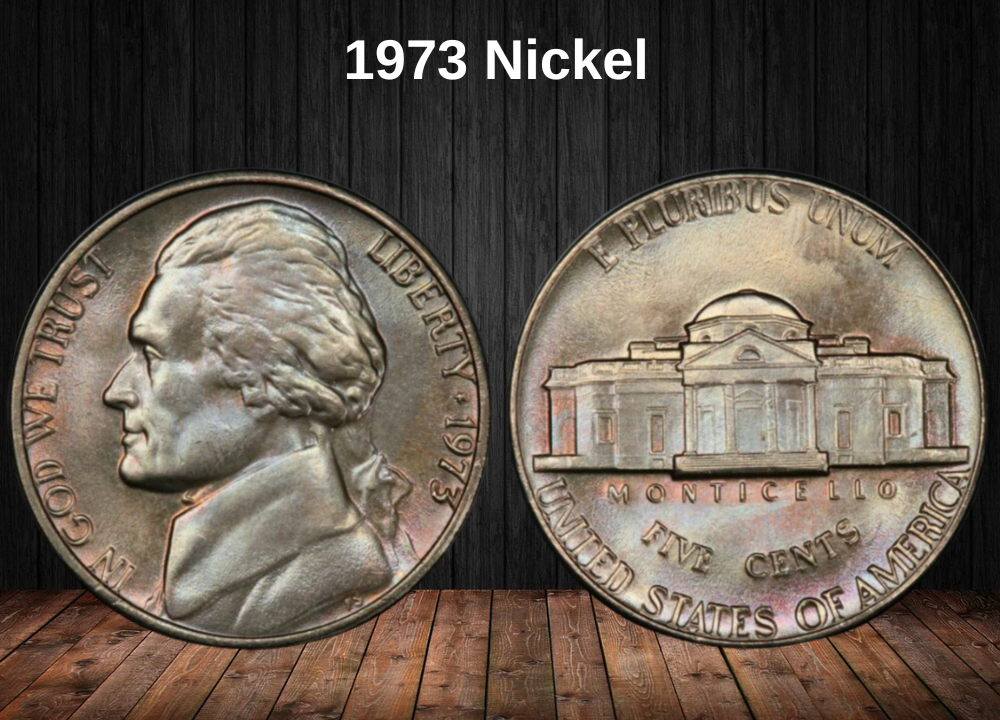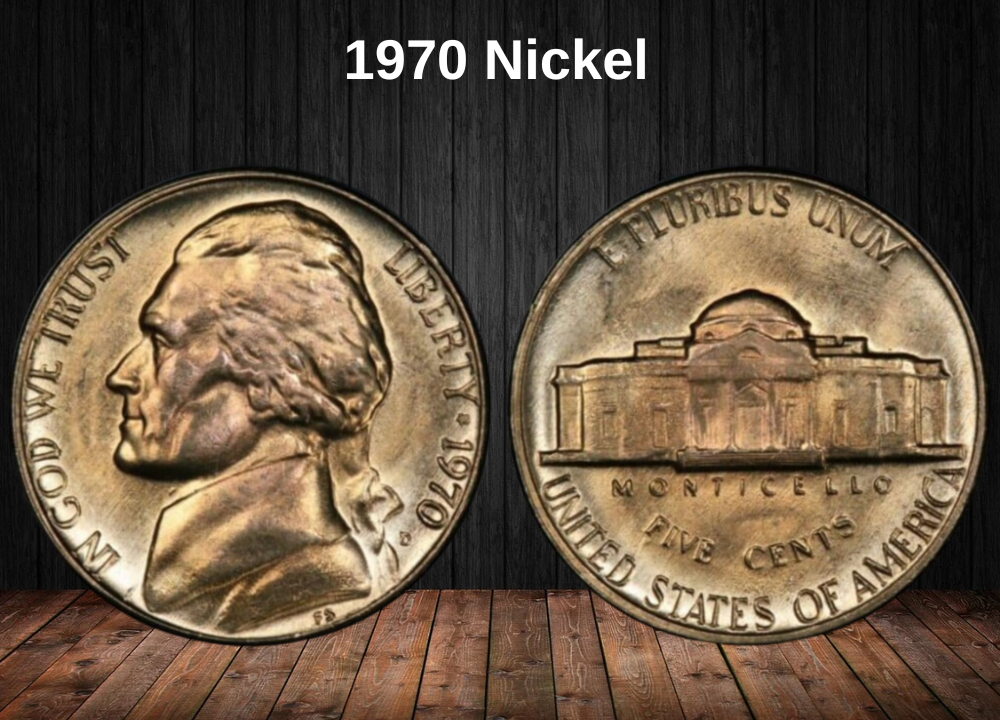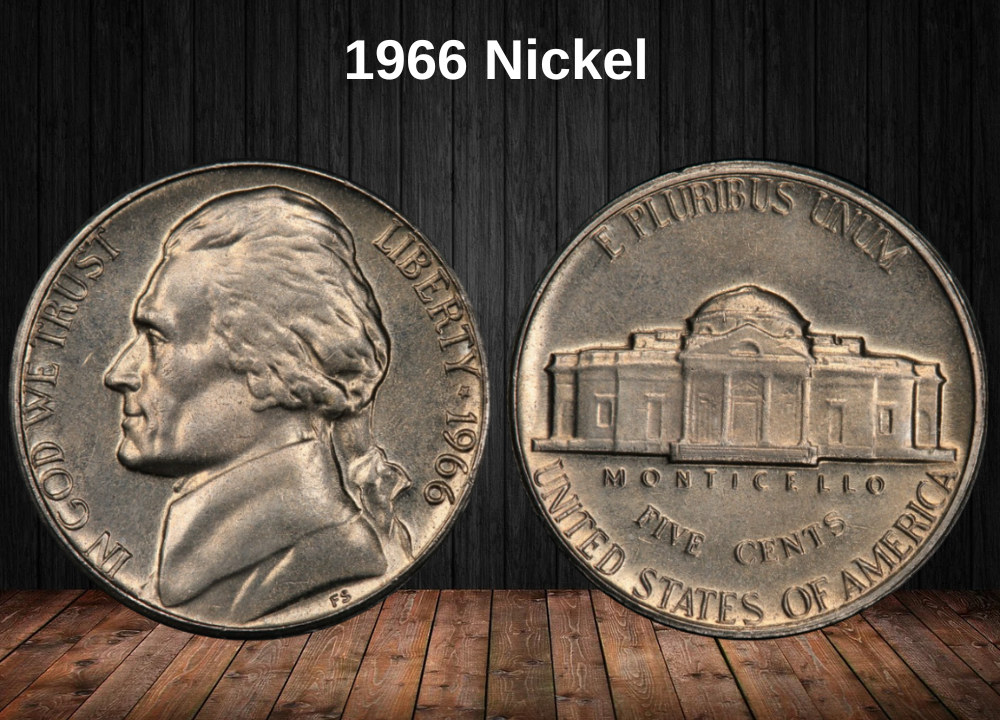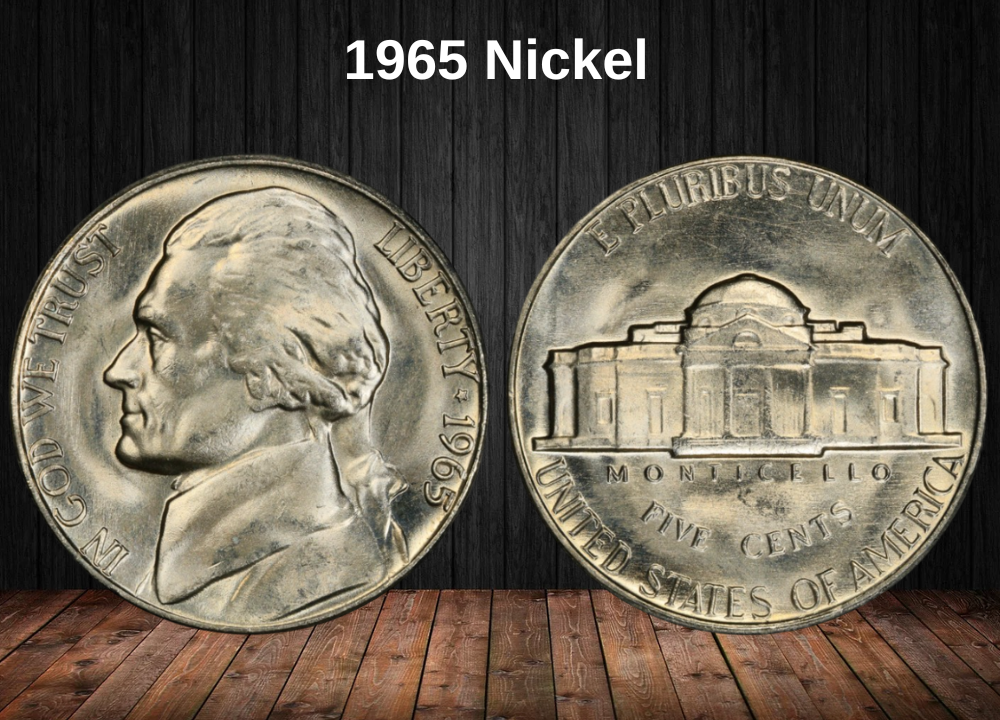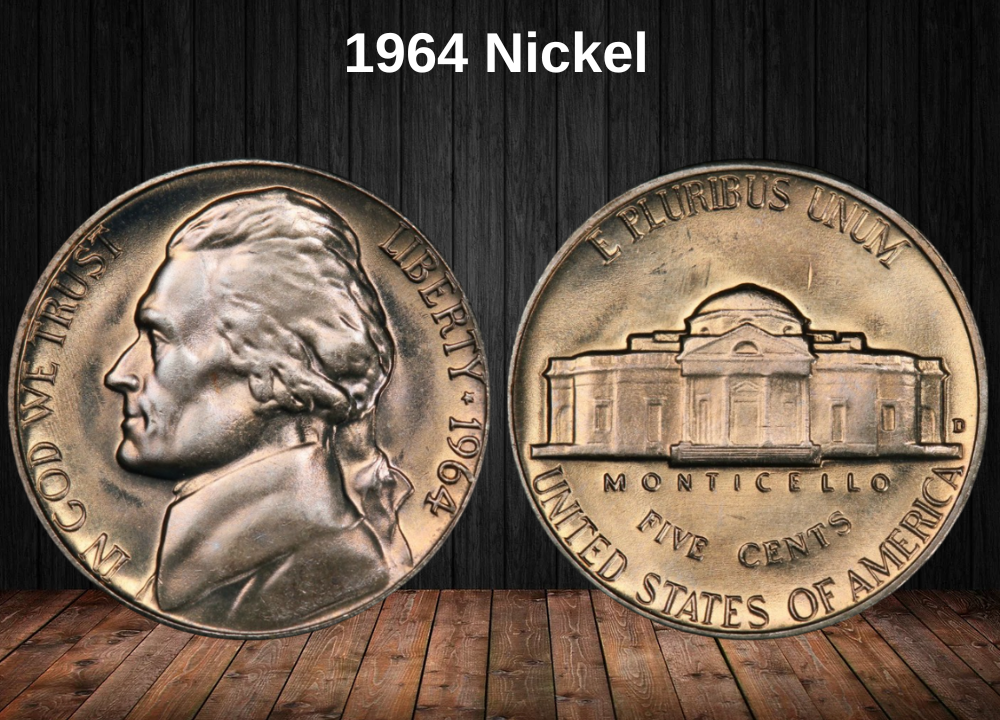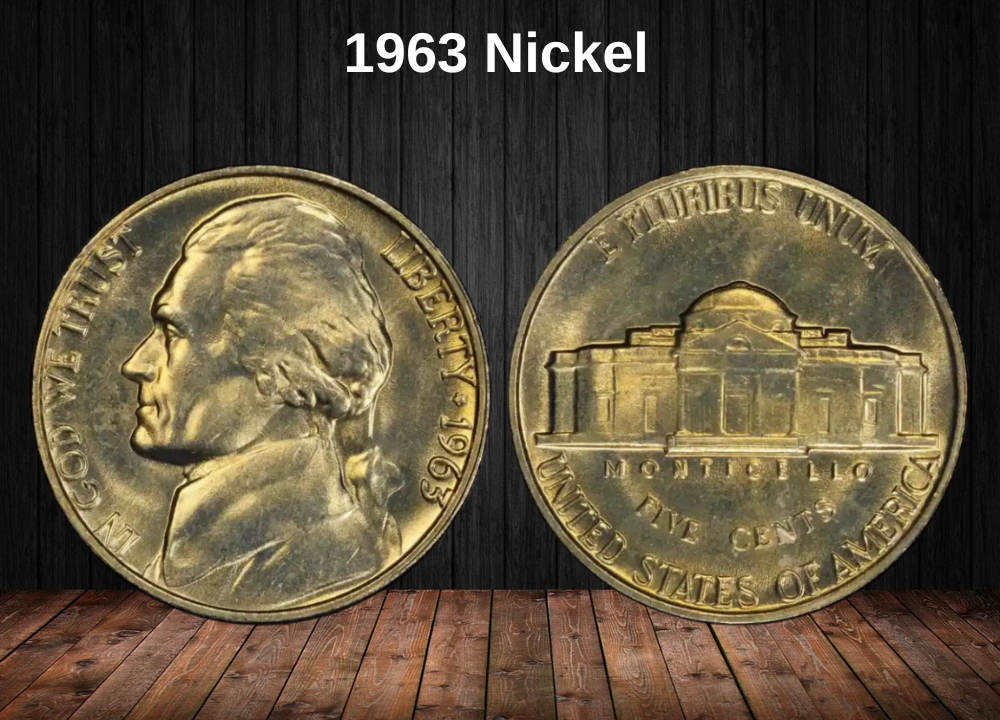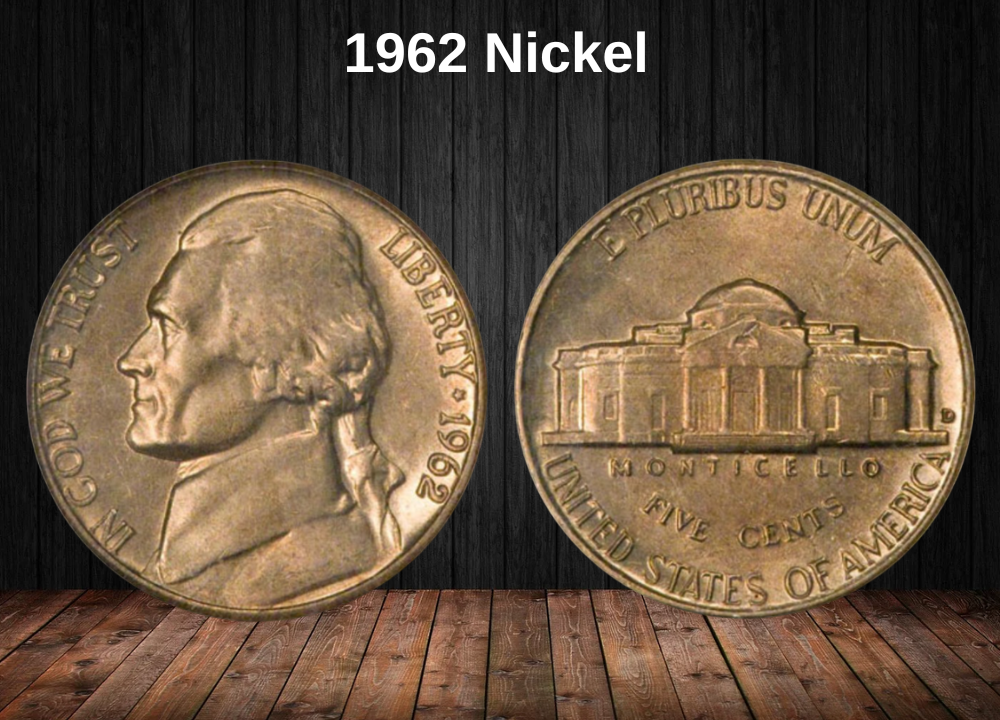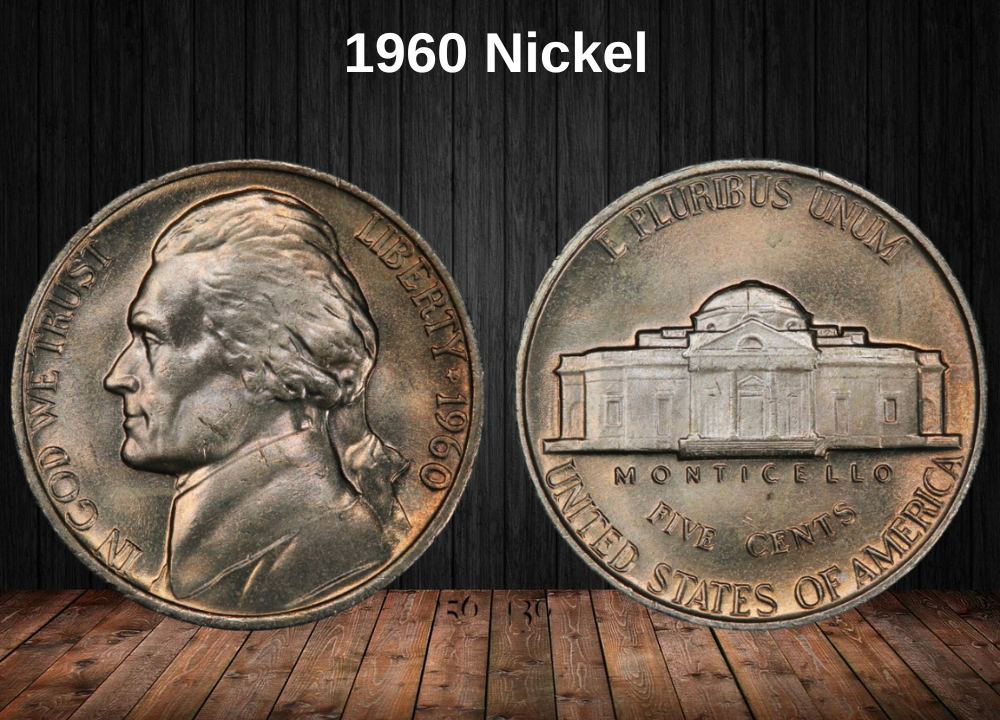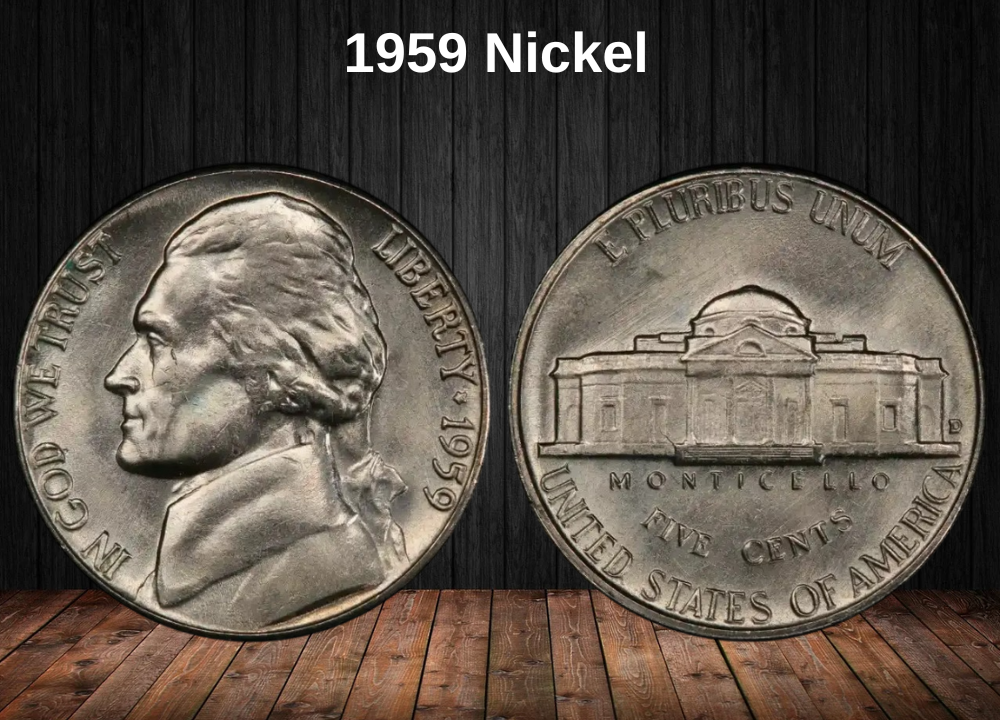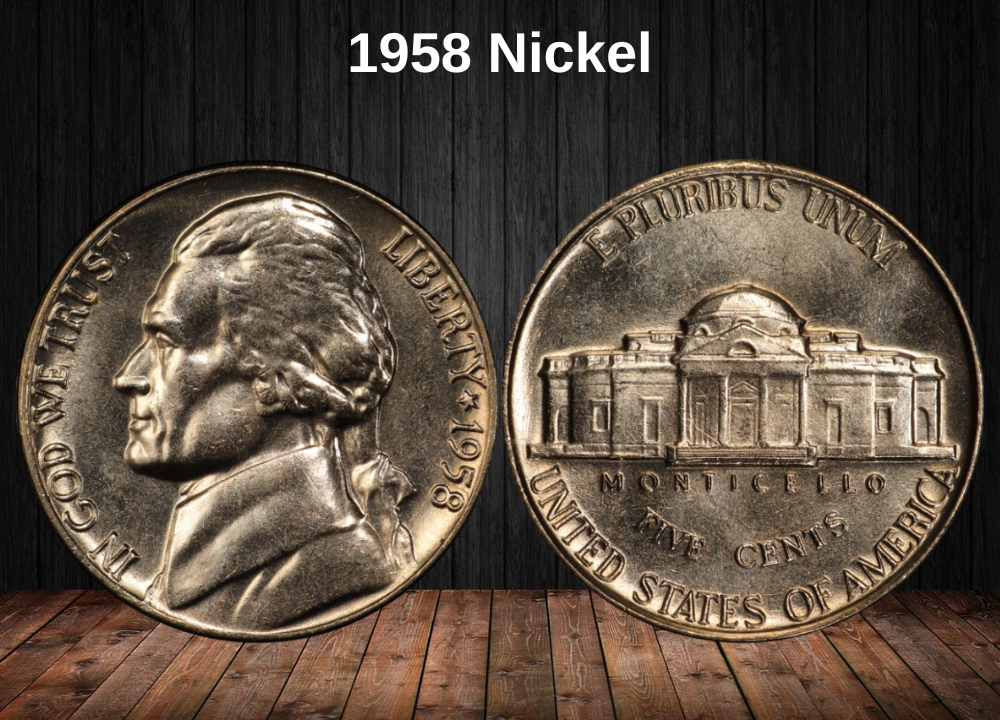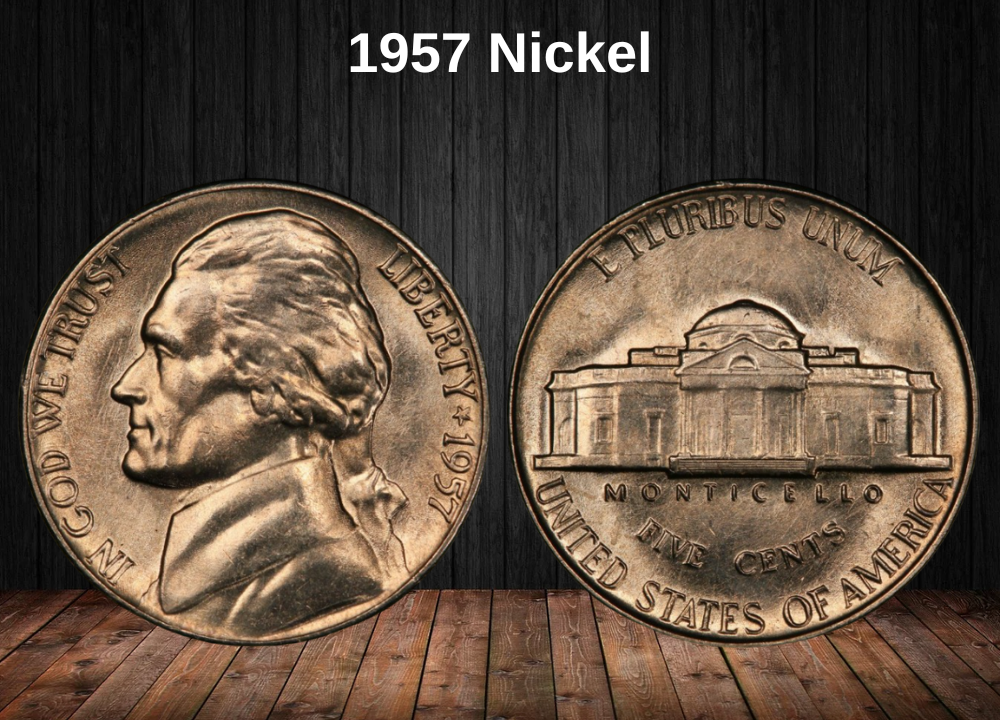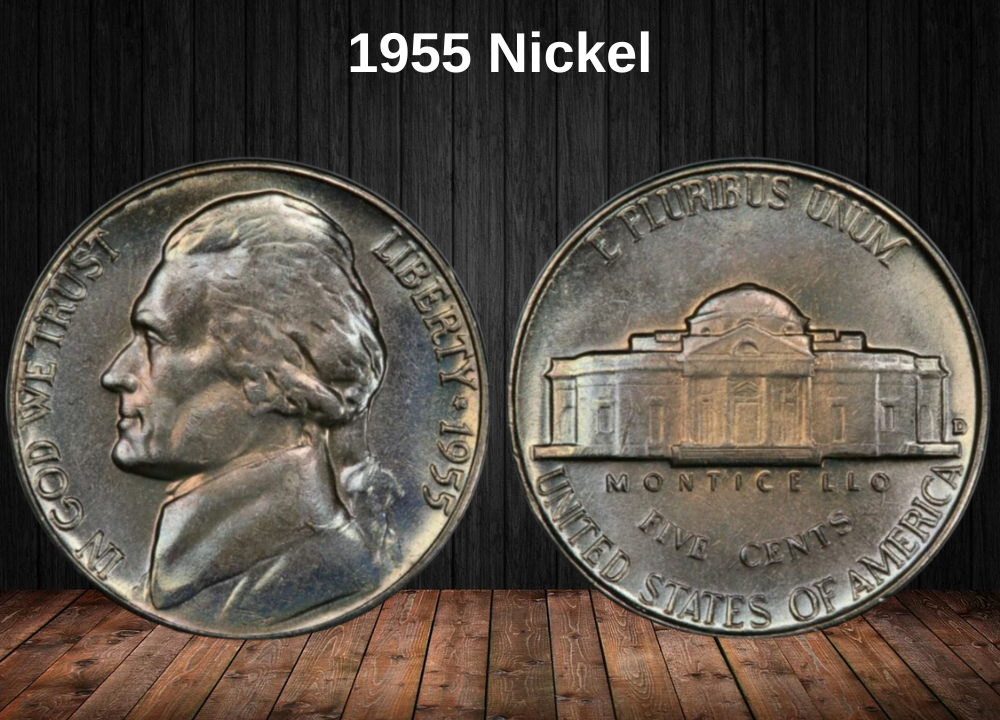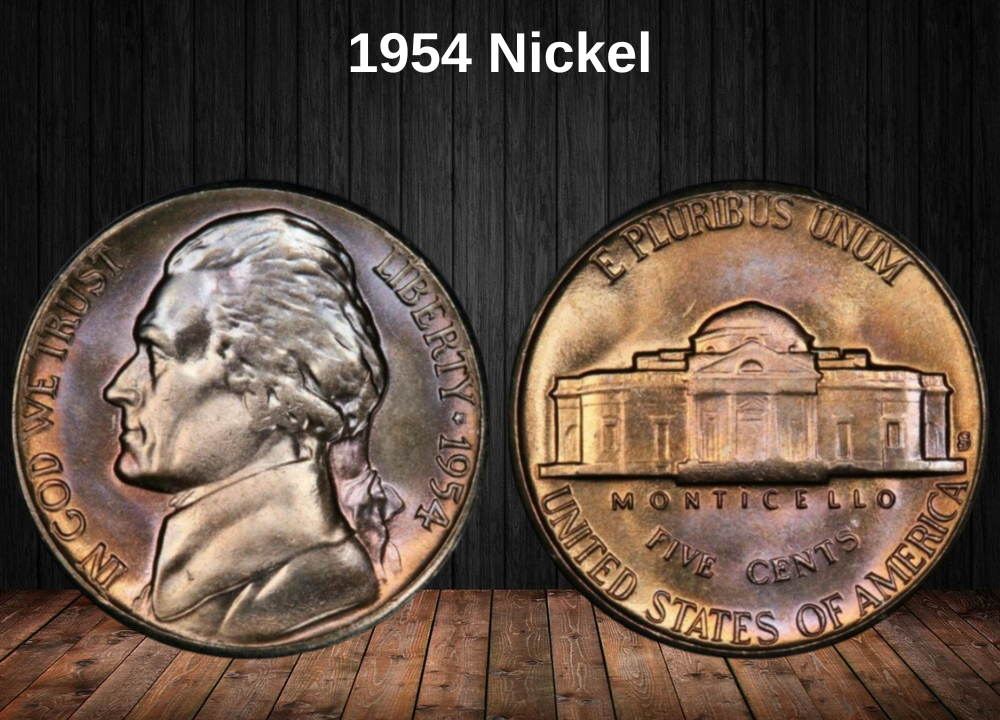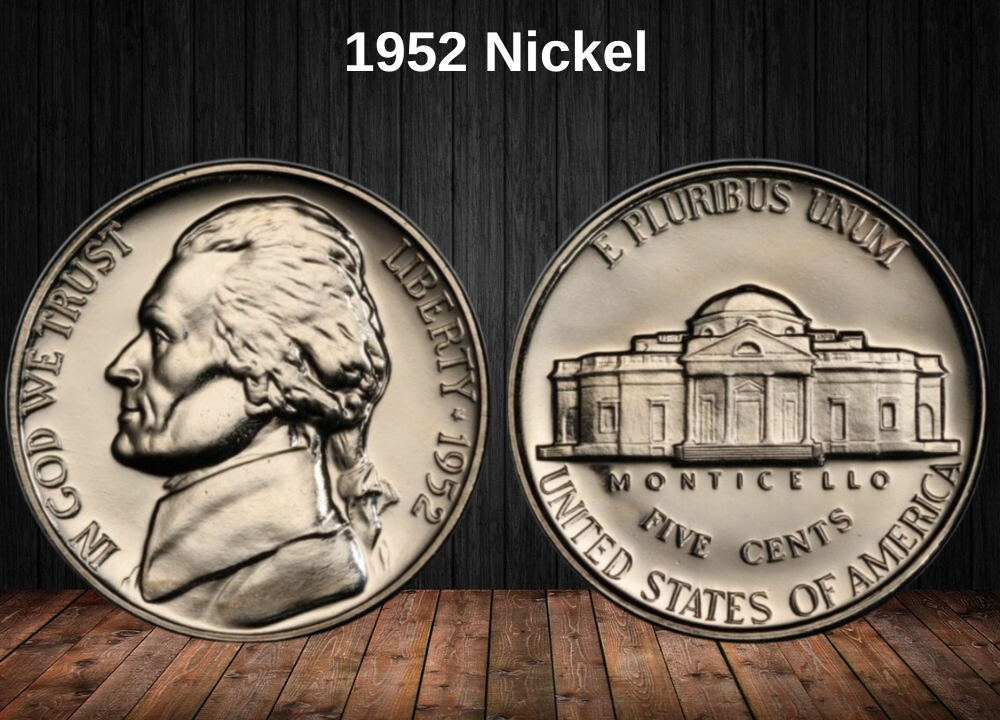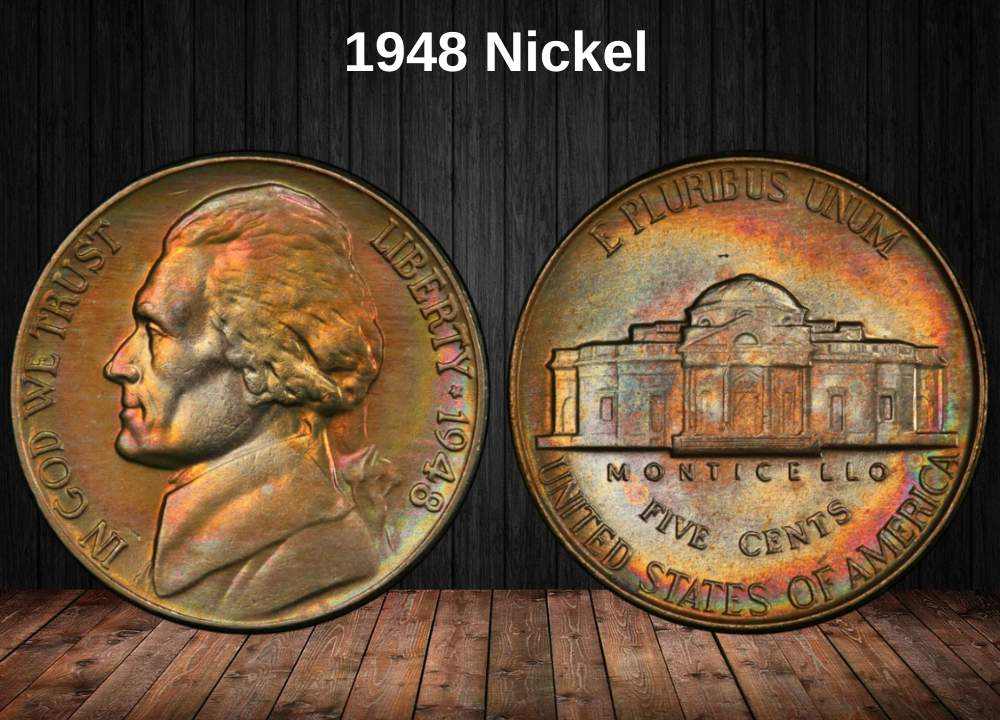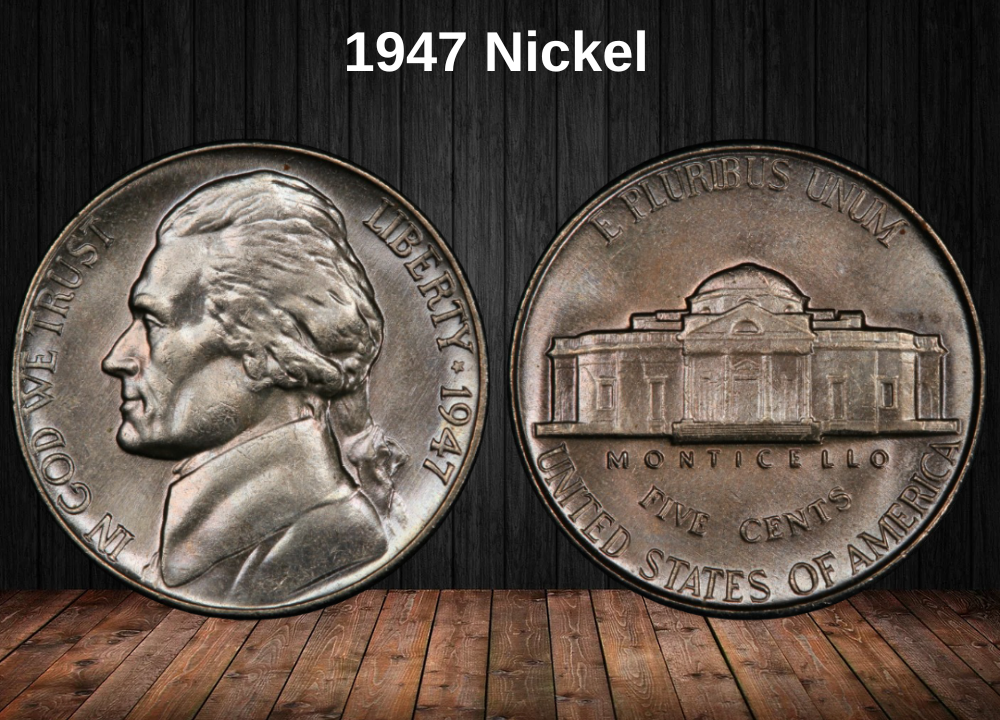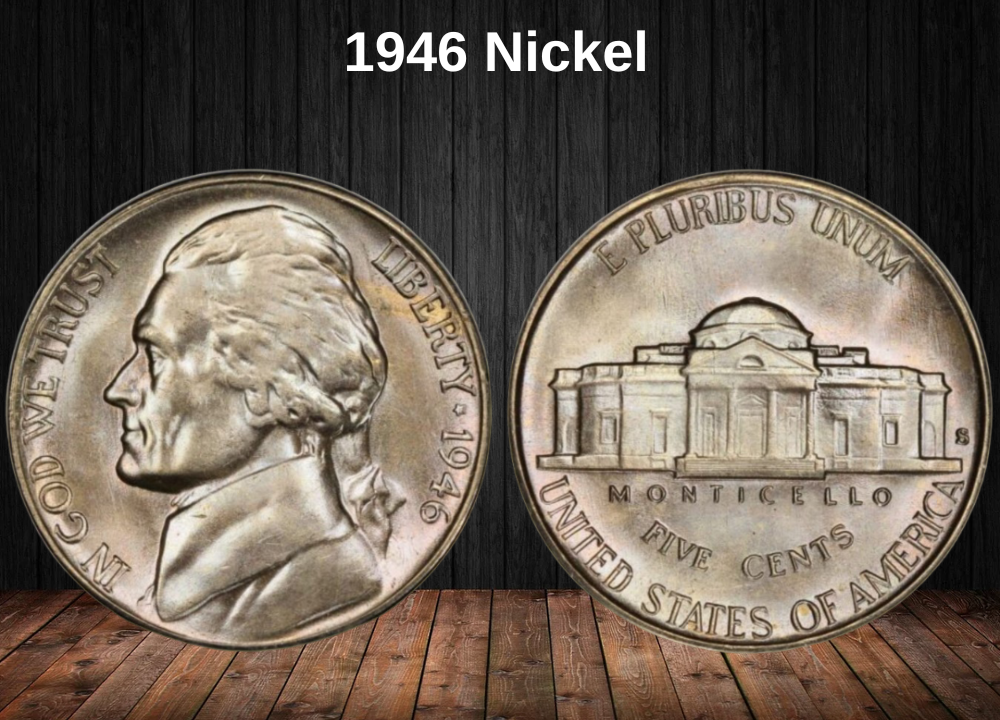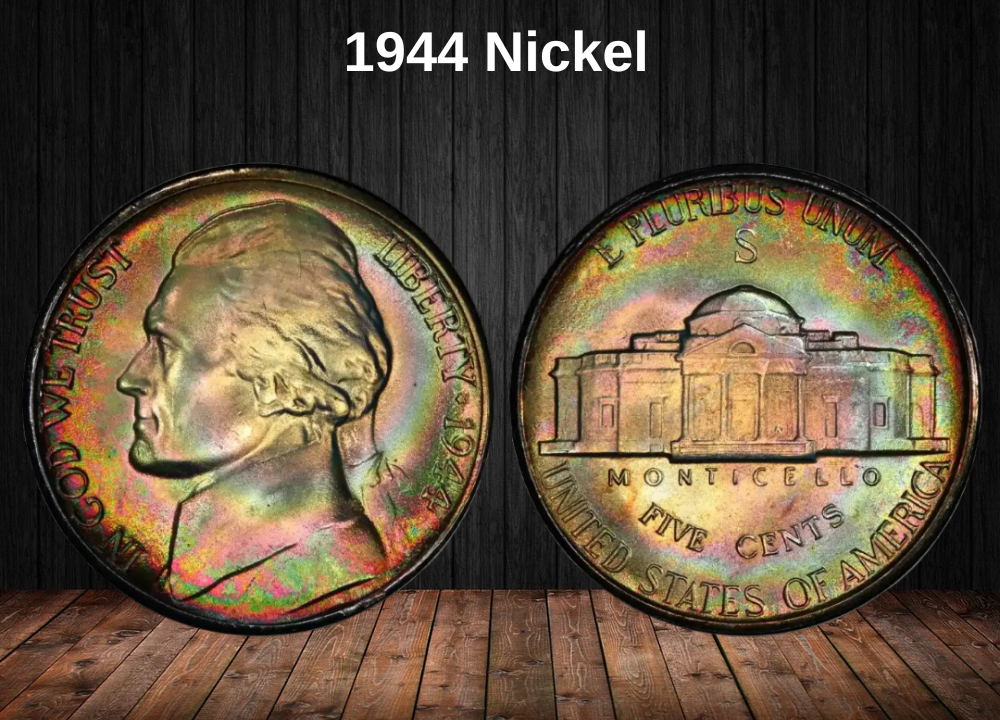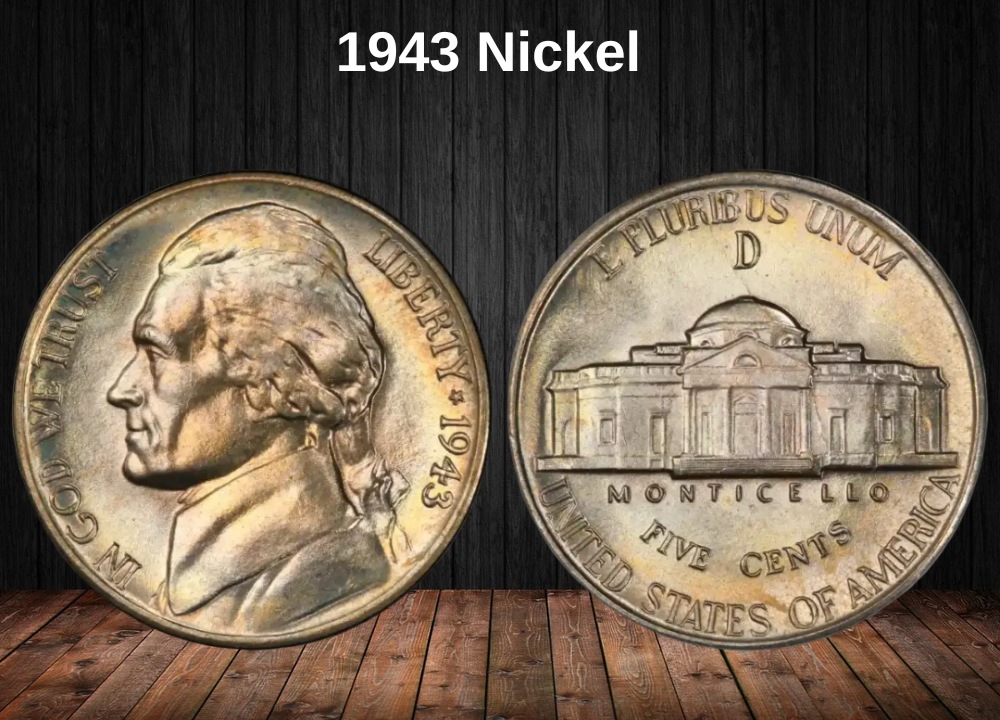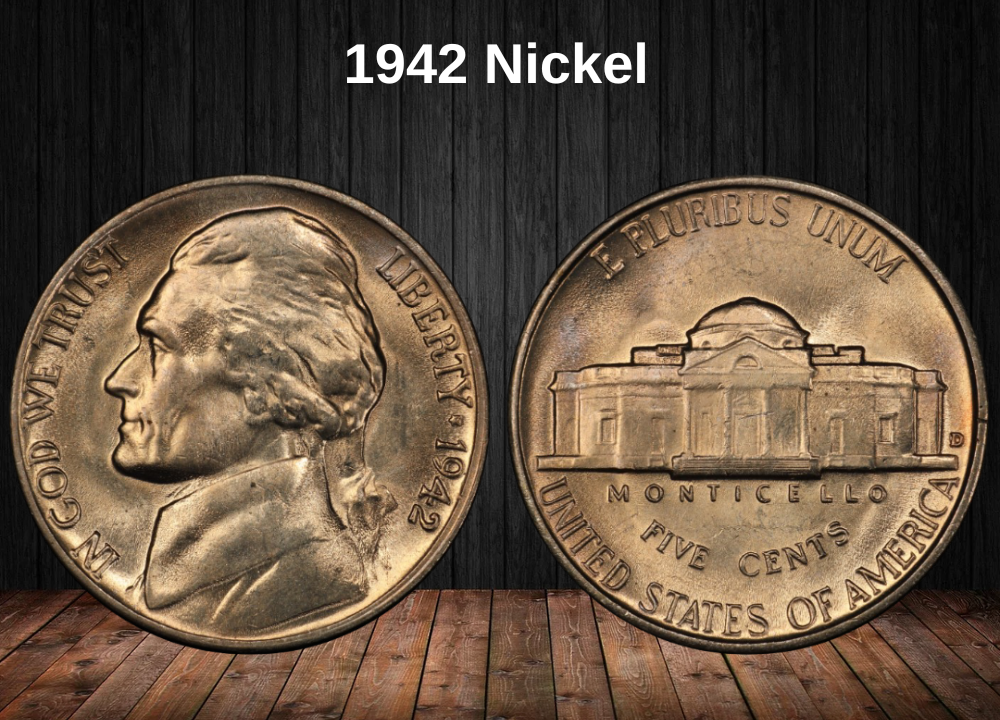Have you come across a 1974 Jefferson nickel in your spare change and wondered what it might be worth today?
Are you building a collection of Jefferson nickels and want to know the fair market value for a 1974 issue, or how much it could contribute to your collection’s overall worth?
This guide was created specifically for you.
The Jefferson nickel series, including those minted in 1974, often holds more sentimental than monetary value for collectors.
Thomas Jefferson, one of America’s Founding Fathers and the nation’s 3rd president, was an enduringly popular figure — making him a fitting choice to be honored on a coin.
In this comprehensive guide, we’ll explore the history of the 1974 nickel, its defining features, how to grade it accurately, and the minting errors that can dramatically increase its value.
Let’s dive in and answer the question: Is a 1974 nickel actually worth anything today?
1974 Nickel Value Chart
| Mint Mark | Good | Fine | Extremely Fine | Uncirculated (MS65) |
|---|---|---|---|---|
| 1974 No Mint Mark | $0.10 | $0.10 | $0.10 | $26 |
| 1974-D | $0.10 | $0.10 | $0.10 | $14 |
| 1974-S Proof | – | – | – | See Proof Values Below |
History of the 1974 Nickel
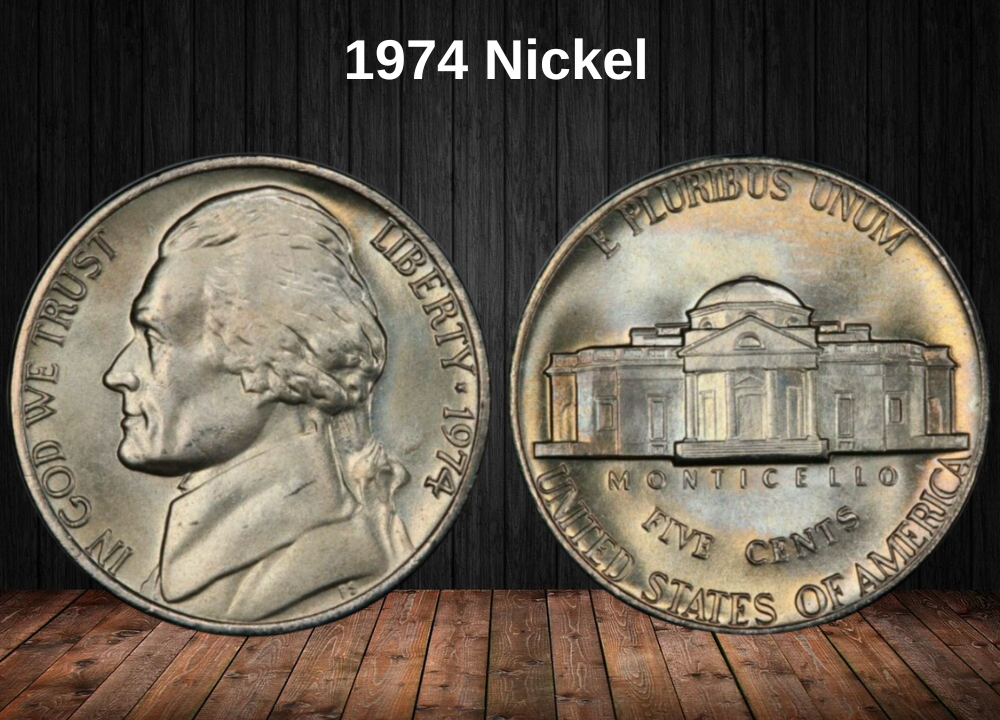
The 1974 nickel belongs to the Jefferson Nickel series, first issued in 1938 to replace the Buffalo nickel. Designed by Felix Schlag, it honors Thomas Jefferson, the 3rd U.S. President, with his home, Monticello, on the reverse.
By 1974, the design remained mostly unchanged and was struck in the standard composition of 75% copper and 25% nickel. Three varieties were minted that year:
- No Mint Mark (Philadelphia)
- D Mint Mark (Denver)
- S Proof (San Francisco)
Design Features
Obverse (Front)
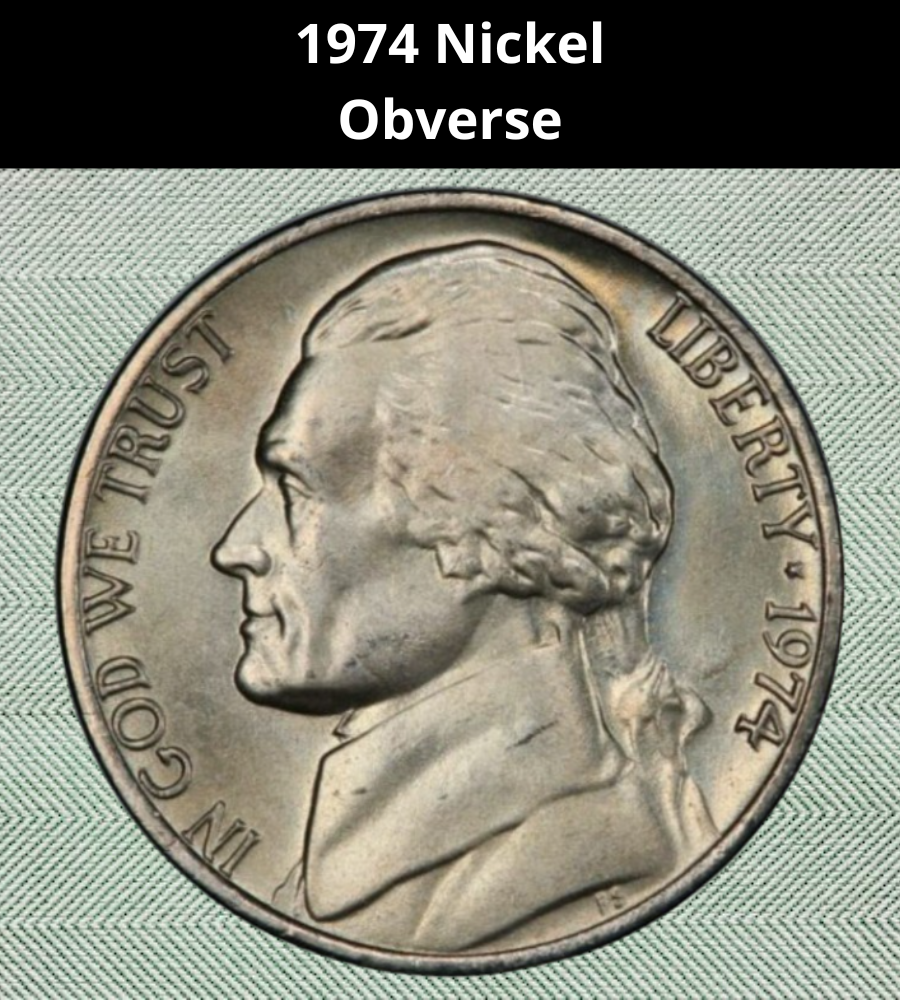
- Portrait of Thomas Jefferson facing left.
- Motto “IN GOD WE TRUST” on the left rim.
- “LIBERTY” and date “1974” on the right, separated by a small star.
- Mint mark (if any) located next to Jefferson’s ponytail.
Reverse (Back)
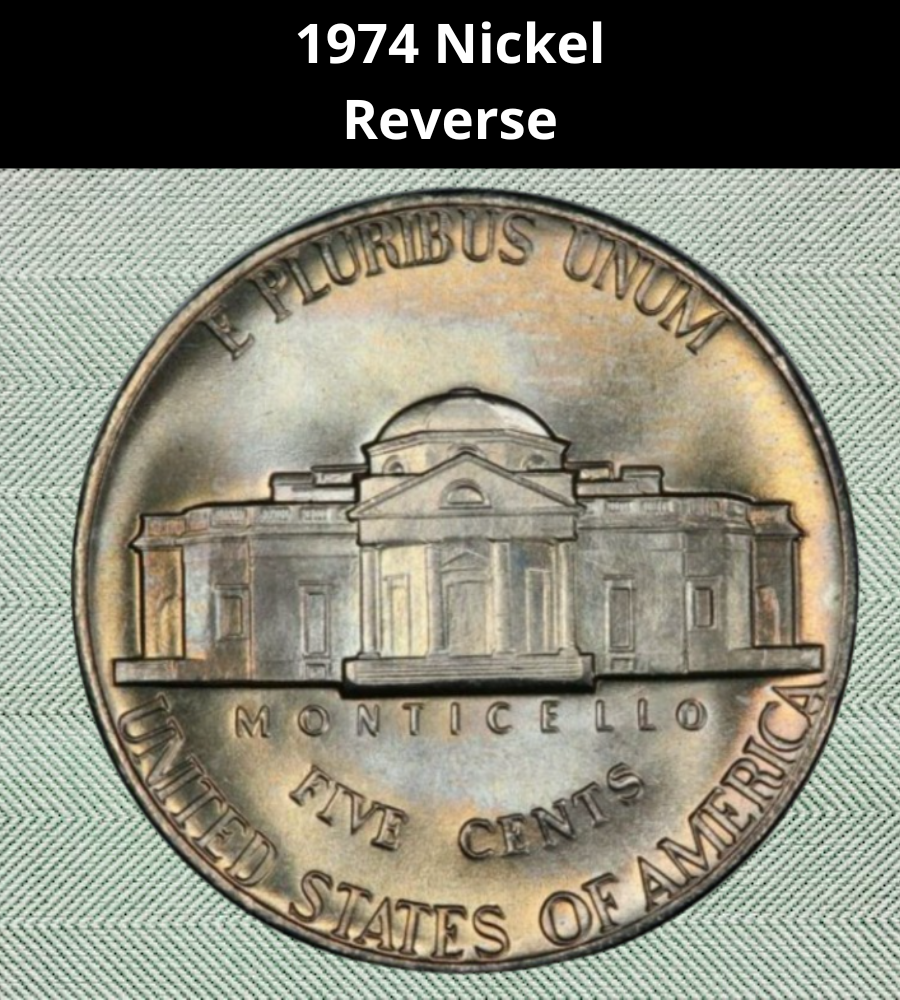
- Image of Monticello, Jefferson’s Virginia estate.
- Name MONTICELLO below the building.
- Denomination “FIVE CENTS” and “UNITED STATES OF AMERICA” at the bottom.
- Motto “E PLURIBUS UNUM” above the building.
- Full Steps: Coins with sharply struck and complete Monticello steps are more valuable.
1974 Nickel Grading Guide
High-grade 1974 Jefferson nickels can be challenging to find, especially with sharp details and minimal marks. Most grading for this year focuses on uncirculated coins since circulated examples are generally common and low in value.
When grading, pay attention to three main factors:
- Luster – Uncirculated coins should show a complete mint shine from rim to rim.
- Strike Quality – Look closely at the Monticello steps. The more steps visible (five or six), the higher the potential value.
- Contact Marks – Fewer visible scratches, nicks, or dents in prime areas (Jefferson’s cheek, hair, and Monticello facade) indicate a higher grade.
Grading Scale Overview
| Grade | Description |
|---|---|
| 1 | Basal State – barely identifiable |
| 2 | Fair – heavily worn, major details missing |
| 3 | Very Fair – outlines visible but very worn |
| 4–6 | Good – major details visible but heavily worn |
| 7–10 | Very Good – more details show, but still worn |
| 12–15 | Fine – moderate wear, key features visible |
| 20–30 | Very Fine – light wear, most design details clear |
| 40 | Extremely Fine – sharp features, light wear only on high points |
| 50 | About Uncirculated – nearly full detail, slight wear |
| 60 | Mint State – no wear, average strike/luster |
| 65 | Mint State Gem – strong strike, full luster, minimal marks |
| 70 | Mint State Perfect – flawless under magnification |
Tip: For Jefferson nickels, the Full Steps designation greatly increases value. Look for sharp, uninterrupted steps on Monticello — a sign of a strong strike.
1974 Nickel Value Guides
The value of a 1974 Jefferson nickel depends on its mint mark, condition, rarity, and whether it has any minting errors. Three main varieties were produced:
- 1974 No Mint Mark Nickel (Philadelphia)
- 1974-D Nickel (Denver)
- 1974-S Proof Nickel (San Francisco)
1974 No Mint Mark Nickel Value
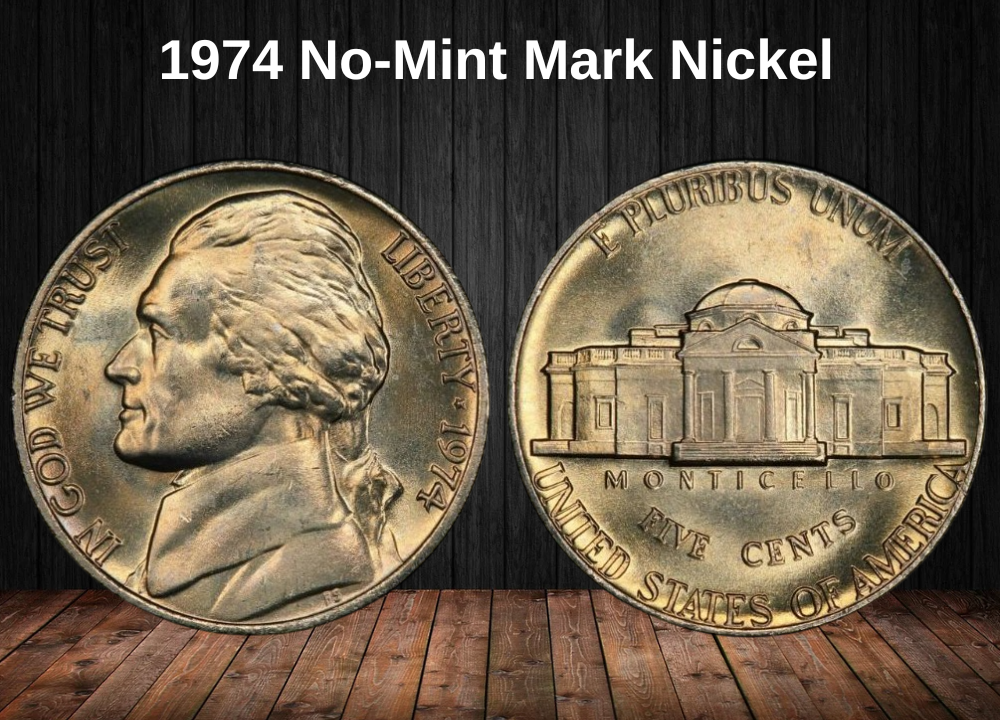
- Mintage: 601,752,000
- Mint Location: Philadelphia
- Mint Mark Position: None
With over 600 million struck, Philadelphia 1974 nickels are common in all grades. Circulated examples are typically worth only $0.10–$0.20, about face value.
Even low-grade uncirculated pieces are affordable — an MS63 sells for around $6, while an MS65 averages $26 and an MS66+ around $42.
Full Steps varieties (with all five or six steps of Monticello visible) bring higher premiums. One MS67 Full Steps example sold for $4,230 at Legend Rare Coins in 2020.
1974-D Nickel Value
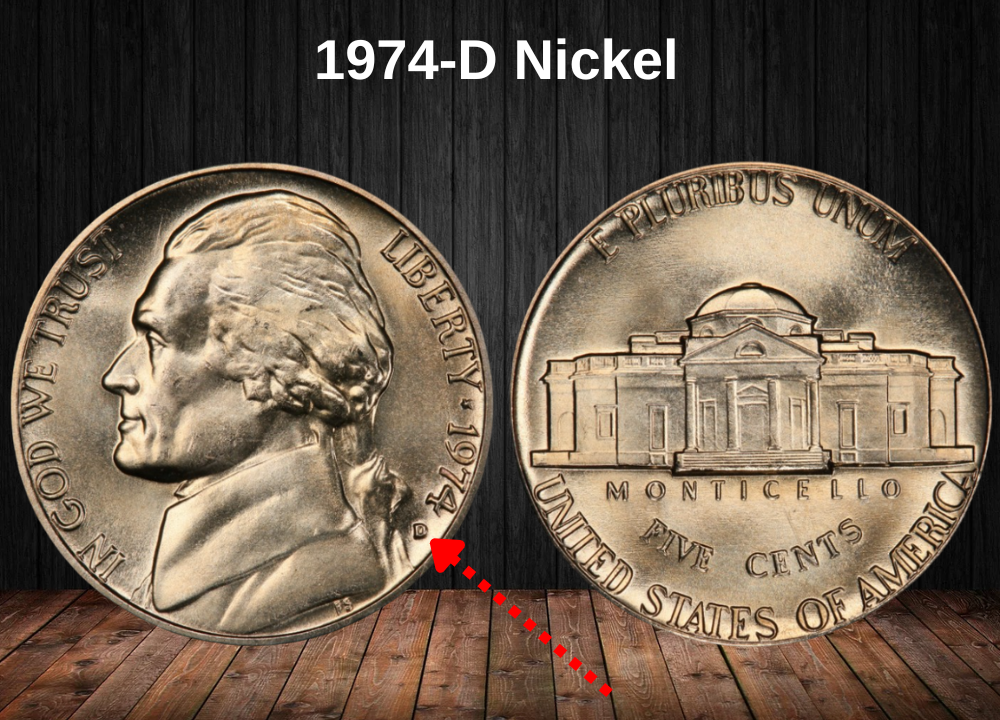
- Mintage: 277,373,000
- Mint Location: Denver
- Mint Mark Position: To the right of Jefferson’s ponytail
Although mintage was lower than Philadelphia’s, 1974-D nickels are still abundant. Many examples have weak strikes or visible marks, reducing eye appeal.
Circulated coins trade for $0.10–$0.20.
Uncirculated values range from $1 for MS60 up to several hundred dollars for high-end gems.
The rarest are MS67+ examples, which can sell for as much as $2,100.
1974-S Proof Nickel Value
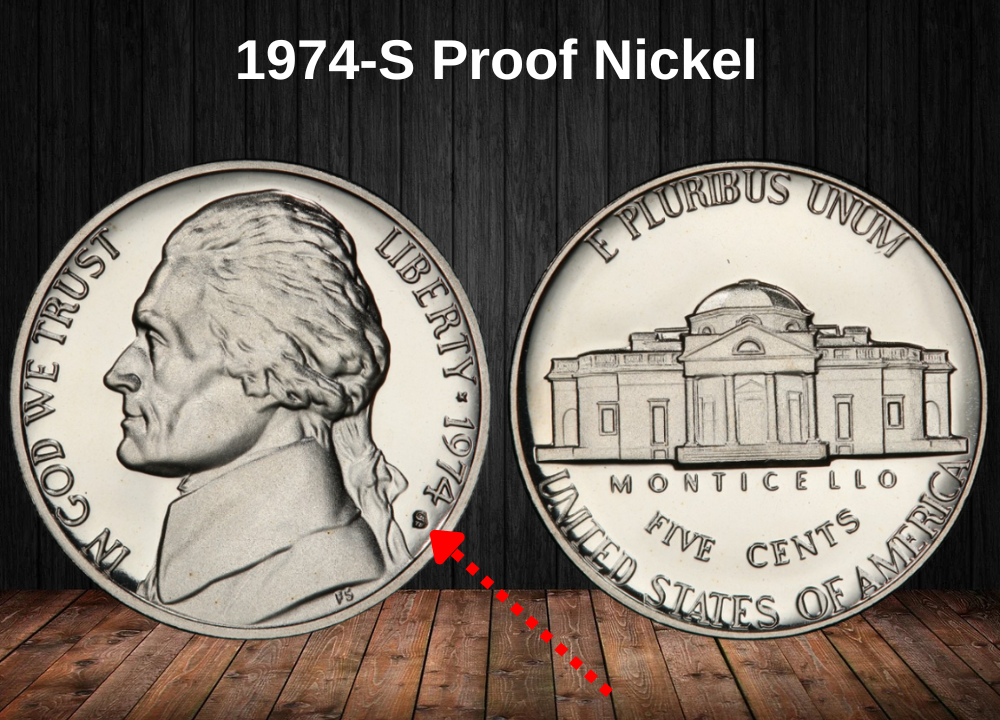
- Mintage: 2,612,568
- Mint Location: San Francisco
- Mint Mark Position: To the right of Jefferson’s ponytail
Struck for collectors, these proofs display mirror-like fields and sharp details. Many survive in pristine condition.
Standard PF69 proofs sell for about $12.50. Ultra Cameo proofs average $25, thanks to their strong contrast.
The top grade, PF70 Ultra Cameo, is rare — one sold for $3,819 at a Stack’s Bowers auction in 2015.
Rare 1974 Nickel Errors List
While most 1974 Jefferson nickels trade close to face value, a small number stand out due to notable minting errors. These unique mistakes can make an otherwise common coin highly collectible and significantly more valuable.
1974 Nickel Struck on a 1973 Nickel
One of the most famous U.S. coin errors, ranked among America’s 100 Greatest Error Coins, involves a 1974 working die striking an existing 1973 nickel.
On this piece, the “3” from 1973 is still visible on the reverse, near the “M” in E PLURIBUS UNUM. This double-dated error is exceptionally rare and historically significant.
- Estimated Value: $15,000–$17,500
- Notable Fact: The known example remains in its original uncirculated mint set.
1974 Nickel – Full Steps Variety
Although not technically a minting error, Full Steps nickels are considered a premium variety due to their sharp strike quality. On these coins, the staircase leading to Monticello is completely visible — either all six steps or a clean five-step detail.
Most 1974 nickels lack this clarity due to worn dies or weak strikes, making Full Steps examples far less common.
- Estimated Value: Up to $4,230 for high-grade Full Steps examples.
- Key Tip: Coins with the PCGS Full Steps designation attract strong interest from collectors.
Where to sell your nickel?
Now that you’re aware of your nickel’s value, you may be curious about the best places to sell it. Don’t worry: here’s a rundown of some top online marketplaces where you can conveniently sell your nickels, along with their benefits and drawbacks.
Explore the best platforms for selling nickels online (advantages and disadvantages).
FAQ
How do I know if my 1974 nickel is valuable?
The nickels struck in 1974 are generally not worth much more than their face value. That said, you can tell a valuable 1974 nickel by its condition, rarity, andstrike quality. Uncirculated, gem-quality examples with no flaws, especially those graded MS67 and above or with a Full Steps designation, are the most desirable and can sell for hundreds — or even thousands — of dollars.
Are 1974 nickels rare?
No, 1974 nickels are not rare. Nearly 900 million were minted across Philadelphia, Denver, and San Francisco. They are still easy to find in circulation. However, high-grade coins and rare error examples are much harder to come by.
Where is the mint mark on a 1974 nickel?
Only nickels from Denver (“D”) and San Francisco (“S”) have a mint mark. This mark appears on the obverse side, just to the right of Jefferson’s ponytail and before the “4” in the date “1974.” Coins minted in Philadelphia have no mint mark.
What is the most valuable 1974 nickel?
The record goes to a 1974 nickel with Full Steps, graded MS67, which sold for $4,230 in 2020. Even higher values have been achieved by rare mint errors, such as the 1974 nickel struck on a 1973 planchet, estimated at up to $17,500.
Do 1974 nickels contain silver?
No. All 1974 Jefferson nickels are composed of 75% copper and 25% nickel. Only nickels made during World War II (1942–1945) contain 35% silver.
How much does a 1974 nickel weigh?
A standard 1974 Jefferson nickel weighs 5.00 grams and has a diameter of 21.2 mm. Any significant difference in weight could indicate a wrong planchet error, which can increase value.
What is a Full Steps nickel?
“Full Steps” refers to the sharp clarity of the stairs on the Monticello building on the reverse side of the coin. Coins with all five or six steps fully visible are rarer and more valuable because they indicate a strong, well-preserved strike.
Should I clean my 1974 nickel before selling it?
No. Cleaning a coin can significantly reduce its value, as collectors prefer coins in their original, unaltered state. Even if your nickel appears dirty, it is better to keep it as is and let a professional grader assess it.

